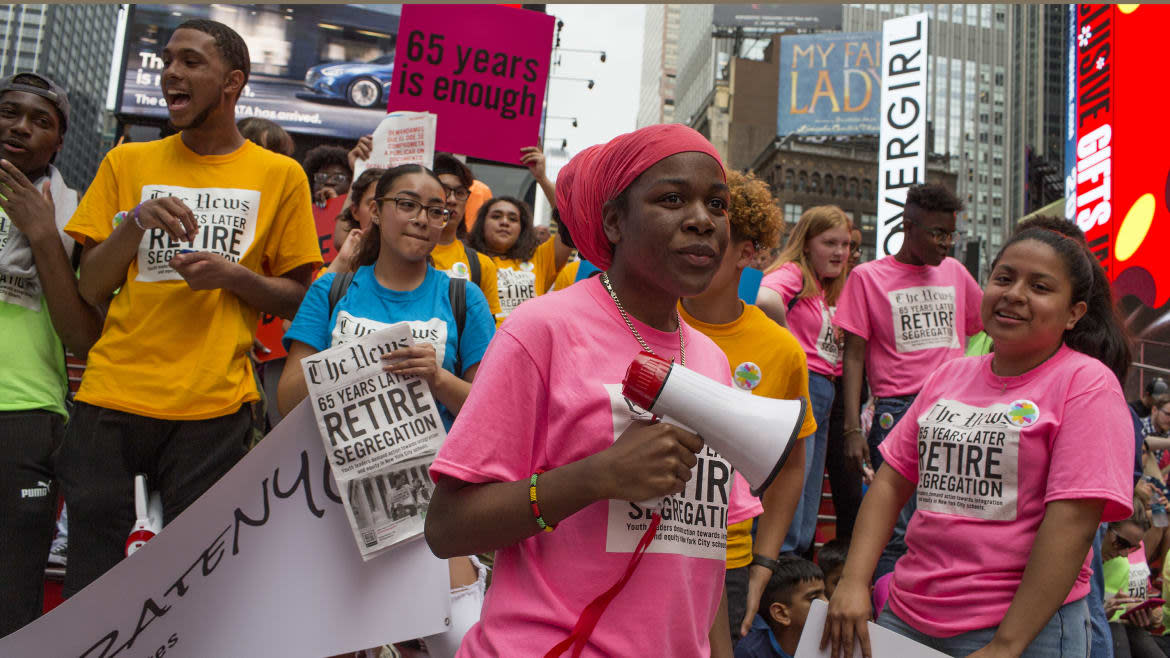Behind the Lines of America’s Educational Civil War

The New York Times headline warns school segregation is “Threatening the Future.” Spoiler: The future is now, as parents looking to protect their children from, well, other children, are increasingly trying to create new school districts to ensure “our” tax dollars don’t go to “their” kids.
The United States has over 16,000 school districts across 49 states (Hawaii is a single district). Though our geographic scope is constant, the number of districts is increasing. Over 200 new districts were created in the last decade despite states’ efforts to reduce duplicative functions and costs, as every district pays for a superintendent, central staff, and individual vendor contracts.
Given that scaled savings could substantially decrease local property taxes, it’s clear that there’s something besides economic self-interest driving our commitment to often tiny hyper-local school districts. Even people without school-age children identify with their community’s schools. But as communities diversify, that localism is driving secession movements splitting districts along economic, racial, and religious lines.
It’s America’s educational civil war, played out in backyards and bake sales, creating ever more adjoining enclaves of privilege, poverty, religious homogeneity, and racial segregation.
In an update to its 2017 report, “Fractured: The Breakdown of America's School Districts,” New Jersey-based not-for-profit Edbuild tracked 128 district secession attempts in the last two years, with 73 newly gerrymandered districts already created and another 17 attempts ongoing. Thirty states have laws allowing for secession. The pace of secession efforts is accelerating, along with new laws that ease the process.
Most secessions are rooted in the desire of wealthier, usually white, taxpayers to direct school funding to neighborhood schools their children attend rather than spreading school enrollments and property taxes among a broader population. EdBuild found that “the majority of the districts left behind have a higher number of nonwhite students and students living in poverty than their secession districts.”
But race and class are not always the driving factor. In New York, the Kiryas Joel district was created to help Hasidic Jewish students draw down federal special education funds apart from the larger, diverse Monroe-Woodbury School District. Though twice prohibited by the US Supreme Court as unconstitutionally establishing religion, a legally sanitized arrangement was eventually approved by the New York State Legislature.
A closer look at our education geography exposes other fault lines, creating an ever-more alarming caste system of schools and districts. Witness Nikole Hannah-Jones' devastating portrayal of racial animus when students from the predominantly black Normandy, Missouri School District, which includes the city of Ferguson, appeared ready to enroll en masse in the nearby, 85% white, Francis Howell School District. The uncivil war between the two communities was resolved without violence but also without achieving racial justice for the educationally disenfranchised Normandy students. Hannah-Jones has likewise documented the invidious stratification of American school district lines in her illustrative description of conditions between Normandy and the neighboring Clayton Public Schools.
The issue isn’t only one of segregated districts of course. That are also widespread patterns of school-based apartheid within districts. Residents of Maryland’s Montgomery County Public Schools are engaged in heated debate over changing school attendance zones to promote diversity. In New York City, Mayor de Blasio’s plan to increase Black and Latin enrollment in exam schools has ignited intense opposition despite, for example, only seven black students being admitted this year to the selective Stuyvesant High School among an entering class of 895 mostly white and Asian students.
These many strategies are reminders of Stokely Carmichael’s insight into how American law delineates race: “Every time I tried to go into a place they stopped me,” he said. “So some boys had to write a bill to tell that white man, ‘He’s a human being; don’t stop him.’ That bill was for that white man, not for me. I knew it all the time.”
That our schools and districts reflect and bake in divisions based on class, race, and religion is, in the words of education writer Jonathan Kozol, a system of “Savage Inequalities.”
With so many jurisdictional issues at play, this civil war is unlikely to be resolved by an education Appomattox. But, reflecting Carmichael’s observation, the Century Foundation proposes a federal legislative stopgap requiring federal preclearance of major district boundary changes. Though based on a Voting Rights Act model recently voided by the Supreme Court, the Foundation's “Bold Agenda for School Integration” notes that districts with “a proven history of discrimination are subject to additional oversight and approval.”
Even if passed, such a law would hardly dent the problem. Without a revolution in the way we see education, as a social good to be broadly encouraged rather than property be hoarded, we will continue to treat school resource allocation as zero sum. Lines will be drawn with increasing strictures, us against them, with consequential conflict and social impoverishment.
Get our top stories in your inbox every day. Sign up now!
Daily Beast Membership: Beast Inside goes deeper on the stories that matter to you. Learn more.

